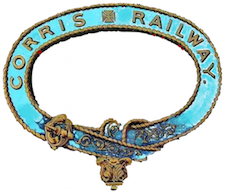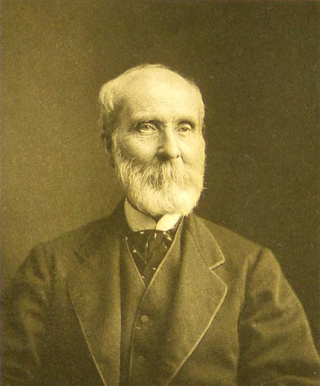
The Corris Railway is a narrow gauge preserved railway based in Corris on the border between Merionethshire and Montgomeryshire in Mid-Wales.

Abergwili is a village and community in Carmarthenshire, Wales, near the confluence of the rivers Towy and Gwili, close to the town of Carmarthen. It is also an electoral ward. Named after the village of Abergwili, the community includes the settlements of Peniel, Llanfihangel-uwch-Gwili and White Mill. The grounds of the former Bishop's Palace are listed on the Cadw/ICOMOS Register of Parks and Gardens of Special Historic Interest in Wales.

Major General Sir Neville Reginald Howse, was an Australian Army officer, medical doctor, and politician. He was the first Australian recipient of the Victoria Cross (VC), the highest decoration for gallantry "in the face of the enemy" that can be awarded to members of the British and Commonwealth armed forces.

Springfontein is a small mixed farming town in the Free State province of South Africa.

Aberllefenni quarry is the collective name of three slate quarries, Foel Grochan, Hen Gloddfa and Ceunant Ddu, located in Cwm Hengae, just to the west of Aberllefenni, Gwynedd, North Wales. It was the longest continually operated slate mine in the world until its closure in 2003. Foel Grochan is the quarry on the north side of the valley, facing Ceunant Ddu and Hen Gloddfa on the south; all three were worked as a single concern throughout their history. Rock was mainly extracted underground, though all three quarries had open pits as well.

Sir Henry Haydn Jones was a Welsh Liberal Party politician.

Sir William MacCormac, 1st Baronet, was a notable British surgeon during the nineteenth and early twentieth centuries. MacCormac was a strong advocate of the antiseptic surgical methods proposed by Joseph Lister and he served in conflicts such as the Boer War. An advocate and pioneer of the Royal Army Medical Corps, MacCormac was perhaps the most decorated surgeon in Britain and he served as Serjeant Surgeon to Edward VII.
Ratgoed quarry was the northernmost of the slate quarries served by the Corris Railway. It is one mile north of Aberllefenni in Gwynedd, Mid Wales, on the western side of Mynydd Llwydiarth. The quarry primarily worked the Narrow Vein, though it also produced some Broad Vein slates.

Braichgoch slate mine was a large slate mine located in Corris Uchaf, north Wales. It was worked continuously from 1787 until closure in 1970, apart from a hiatus in the 1900s. Most of the surface workings of the quarry were removed as part of a road widening and landscaping scheme in 1983.

Sir William Goscombe John was a prolific Welsh sculptor known for his many public memorials. As a sculptor, John developed a distinctive style of his own while respecting classical traditions and forms of sculpture. He gained national attention with statues of eminent Victorians in London and Cardiff and subsequently, after both the Second Boer War and World War I, created a large number of war memorials. These included the two large group works, The Response 1914 in Newcastle upon Tyne and the Port Sunlight War Memorial which are considered the finest sculptural ensembles on any British monument.

Garneddwen is a hamlet in the south of the county of Gwynedd, Wales. It lies in the historic county of Merionethshire/Sir Feirionnydd, in the valley of the Afon Dulas.

Sir Haydn is a narrow gauge steam locomotive, built by Hughes's Locomotive & Tramway Engine Works, Loughborough in 1878. It operated on the Corris Railway in Wales, until closure in 1948, and since 1951 has operated on the nearby Talyllyn Railway. It has carried the operating number 3 under four successive owners.

Lieutenant Harold Lothrop Borden was from Canning, Nova Scotia and the only son of Canada's Minister of Defence and Militia, Frederick William Borden and related to future Prime Minister Robert Laird Borden. Serving in the Royal Canadian Dragoons, he became the most famous Canadian casualty of the Second Boer War. Queen Victoria asked F. W. Borden for a photograph of his son, Prime Minister Wilfrid Laurier praised his services, tributes arrived from across Canada, and in his home town a monument was erected to his memory.
Alfred Hughes may refer to:

Sir Anthony Alfred Bowlby, 1st Baronet was a British Army officer, surgeon and pathologist.

The Llwyngwern quarry was a slate quarry in Wales that opened by 1828 and continued working until about 1950. The quarry is located on the western flank of Mynydd Llwyn-gwern.

Cambergi quarry was a slate quarry in Cwm Hengae, west of Aberllefenni in North Wales. It operated between 1873 and about 1895.

Edward Hare was a British surgeon and former Director-General of Hospitals in Bengal, India. Hare is best known for his medical work in using quinine for treatment of malaria fevers. He was also a vegetarianism activist.


















